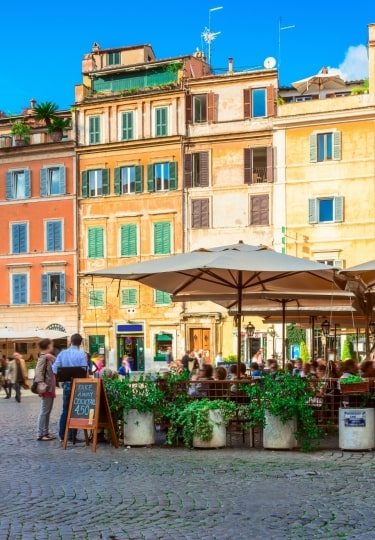Trastevere, Rome, is a culinary and cultural destination that’s become one of the Eternal City’s most enticing neighborhoods.
Its name translates as “across the Tiber”, and that’s exactly how you’ll approach it—strolling from the centro storico over the ancient arches of the Ponte Sisto bridge before being pulled into this neighborhood’s charismatic, cobblestoned streets.
Once a crowded working-class quarter, Trastevere has become a nightlife hot spot offering chic bars, cocktail spots, and some of the city’s most hallowed trattorias. So when in Rome, set out to locate the Trastevere neighborhood’s highlights and hidden gems.
Attractions
Piazza Santa Maria
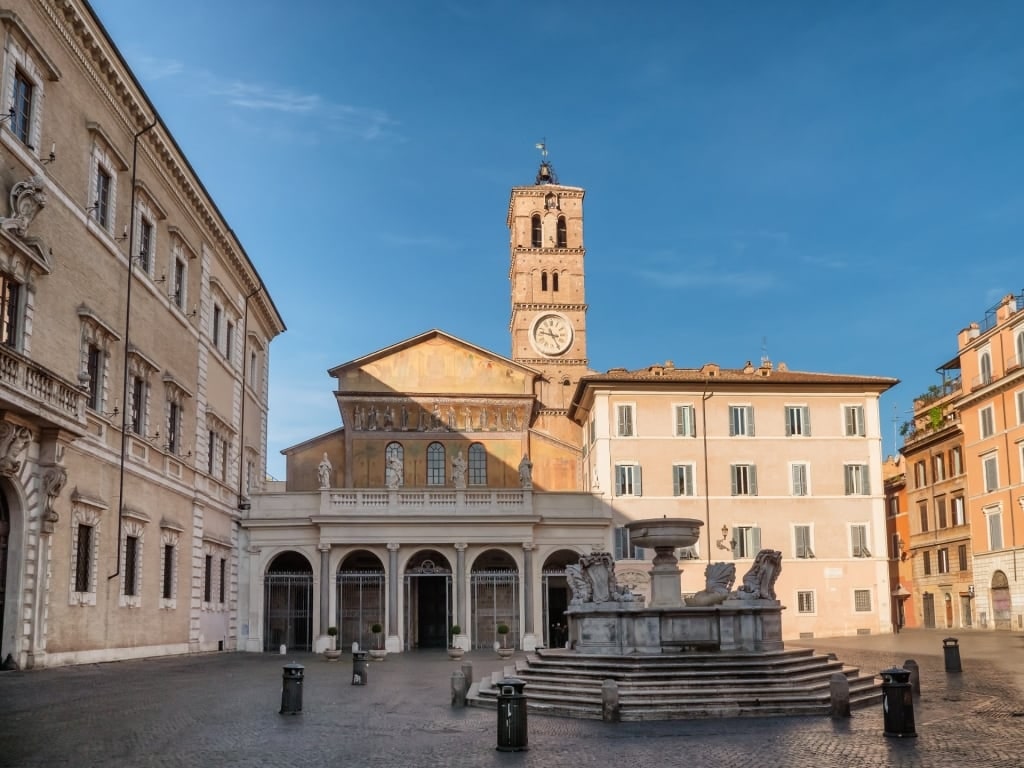
Piazza Santa Maria
In the heart of Trastevere, Piazza Santa Maria is one of the neighborhood’s best people-watching spots.
Visitors are drawn to this attractive central square as they get their bearings, while locals read Corriere della Sera on the circular stone steps of the central fountain, one of the city’s oldest. If the stones are a little cold, they head for Caffe di Marzio and, depending on the time of day, linger over a cappuccino or a Spritz.
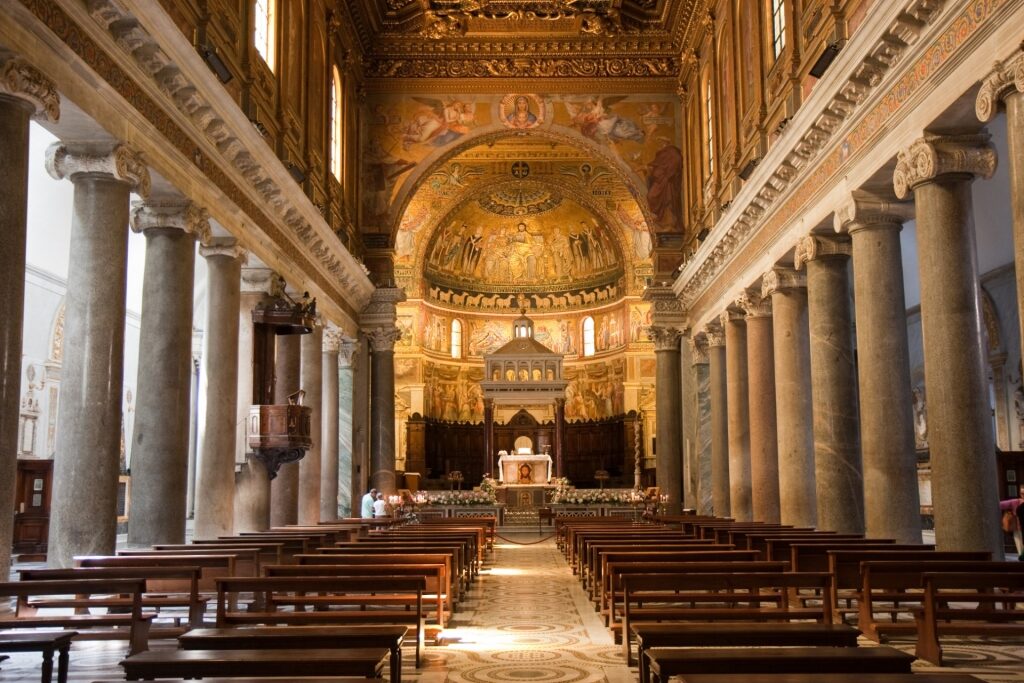
Basilica of Santa Maria in Trastevere
On the western edge of this cobbled square, towering over the flow of Romans, is the Basilica of Santa Maria in Trastevere with its distinctive bell tower. One of several basilicas of note in Trastevere, Santa Maria is of particular interest as it’s considered the oldest in Rome, its footprint and walls dating back to the 4th century AD.
Step inside beneath the arches of its 18th-century facade and you’re immediately struck by the dramatically coffered ceiling. What draws many to this spiritual Roman landmark are the mosaics by Pietro Cavallini dating back to the 13th century.
Ponte Sisto
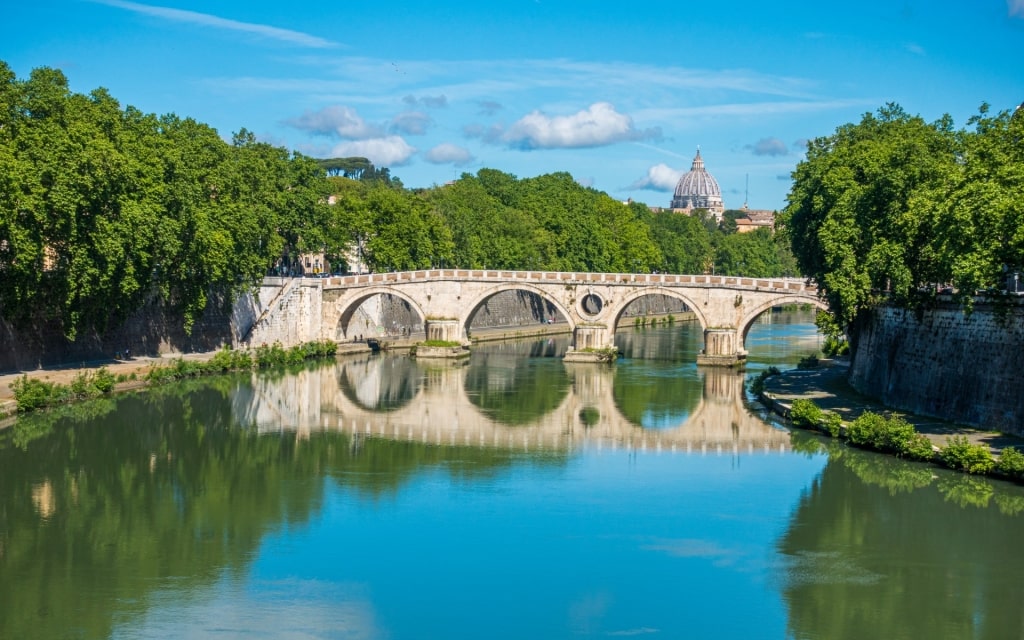
Ponte Sisto
Of the several bridges leading into Trastevere’s peach-hued lanes, the Ponte Sisto is the most iconic.
Constructed in the late 15th century, this grass-tufted bridge, with its arches created in solid, elegant simplicity, is an emblem of the Renaissance. Come evening, the white travertine gleams in the night with the wine-dark Tiber rushing beneath it.
An architectural and cultural icon of Rome, its primary symbolism is as the gateway to the Trastevere neighborhood. From the more orderly streets of the city center, the Ponte Sisto vaults you into the wandering lanes of this bohemian quarter, with the aproned staff of bars and restaurants ready to show you to a table.
Church of San Francesco a Ripa
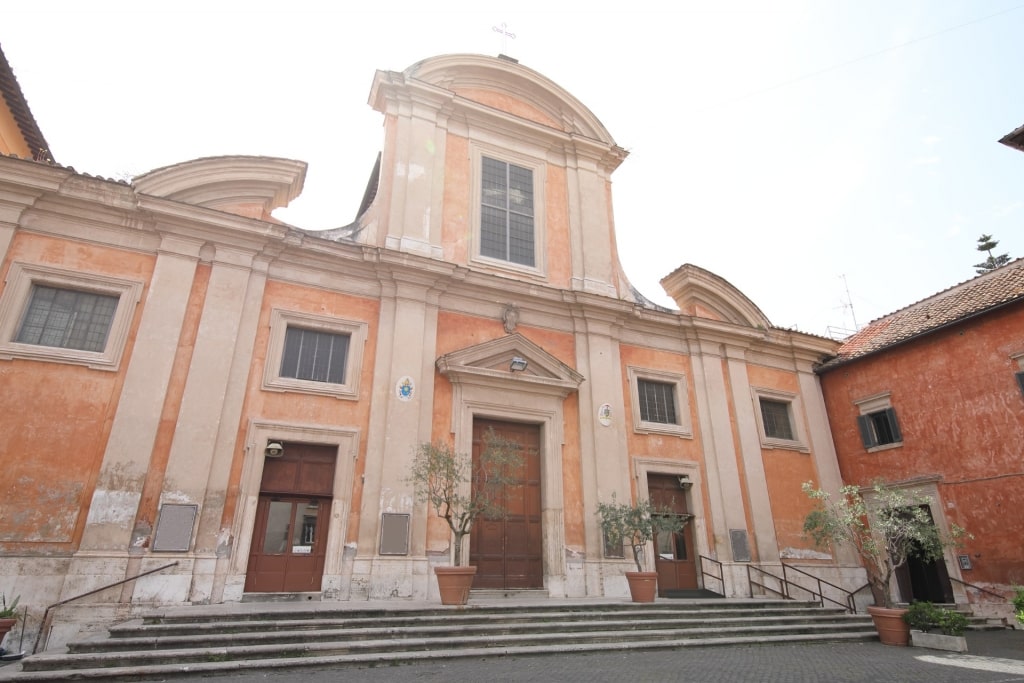
Church of San Francesco a Ripa
The baroque Church of San Francesco a Ripa is a significant religious landmark that’s the hallowed home of several treasures.
Located in Piazza di San Francesco di Assisi, found on the southern edge of Trastevere, the address hints further at its history.
Built at the start of the 1600s, the Roman church exists on the site of a former Franciscan convent. It’s said that St. Francis of Assisi, to whom the church is dedicated, stayed here for a spell in 1219 while visiting the Pope.
Within the church’s sun-filled, echoey interior, it’s possible to ask a curator to look at the saint’s room. It’s a humble cell, and you can understand why St. Francis moved on when you see the rock that reportedly acted as his pillow.
Beyond this sacred space, you’ll also find within the scandal-inducing marble figure of Beata Ludovica Albertoni. The erotic charge breathed into this divine image is by the celebrated sculptor, Bernini.
Buried within the church is another more contemporary artistic giant, Giorgio de Chirico. You’ll find this influential artist’s tomb to the left, as you enter.
Palazzo Corsini
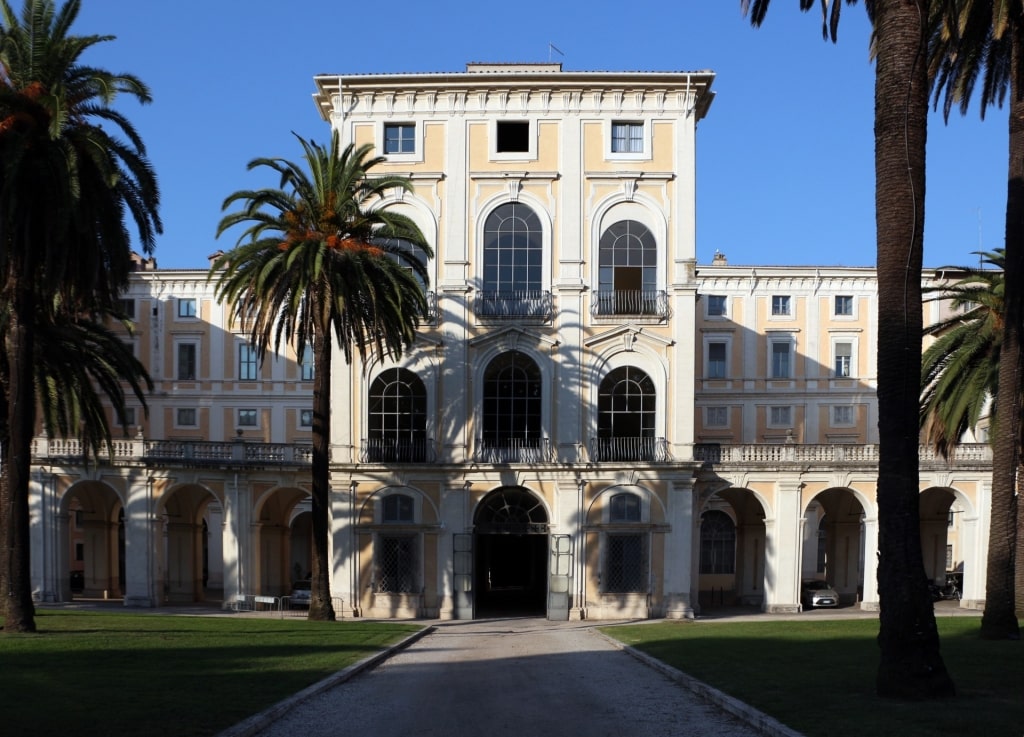
Palazzo Corsini Photo by Sailko on Wikimedia Commons, licensed under CC BY 3.0
Just around the corner from the botanical gardens, this opulent 16th-century palace stands at odds with the Trastevere neighborhood’s working-class roots. The former residence of the Queen of Sweden, the palm-fronted palazzo has today morphed into Italy’s national art gallery.
Perhaps it is because Italy is so endowed with museums, galleries, and outdoor sculptures that this exquisite and relatively compact gallery is often fairly quiet. Within its stately hallways, you’ll browse a selection of gilt-framed works from painters including Caravaggio, Van Dyke, and Murillo.
If you’re going to see something specific, check ahead that it’s not on loan during your planned visit.
Things to Do in Trastevere
Browse the Markets
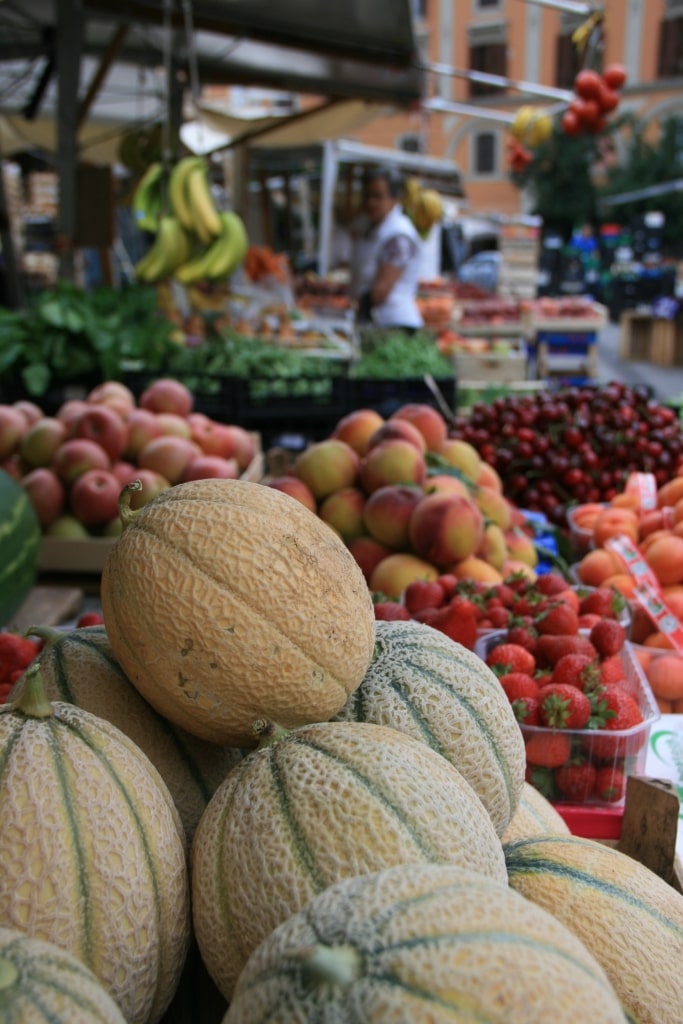
Market in Trastevere
Trastevere, Rome, has been a hub for commerce ever since the third century BC. So make like a Roman and go shopping.
Begin with a wander through the outdoor Mercato di San Cosimato. An easygoing hub for the Trastevere neighborhood, its stalls are set out with fulsome Mediterranean produce, incredible cheeses, second-hand books, and more. In the summer, an outdoor cinema is set up after the market stalls have been packed away.

Porta Portese flea market
On Sundays, the Porta Portese flea market attracts cash-carrying bargain hunters to Trastevere’s cobbled streets. It’s located around the 17th-century triumphal city gate after which it’s named. Expect a scattergun collection of goods, from phone cases to chandeliers. You can also find good deals on vintage clothes in the section in Piazza Ippolito Nievo.
If you’d prefer not to wade through the clothing piles at Porta Portese, find your way instead to the Prada-laden clothing racks of Twice Vintage. For leather goods, head to Via della Lungaretta. And for everything else, from pastries to jewelry, Via del Moro has what you’re looking for.
Walk up Gianicolo Hill
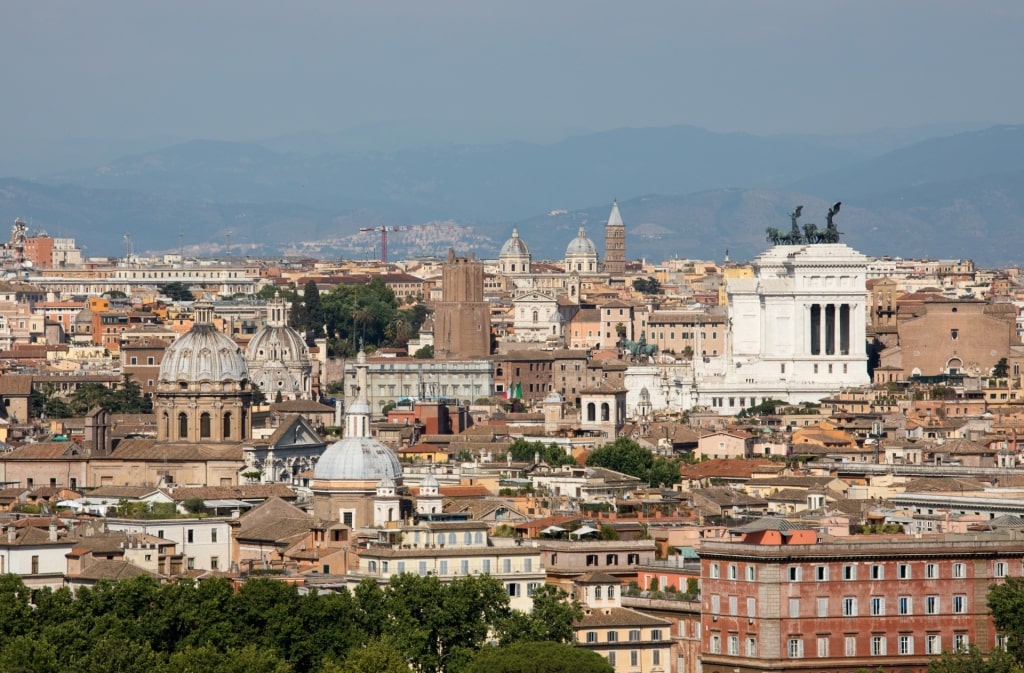
Gianicolo Hill
Gain a leafy perspective over the Trastevere neighborhood by walking up Gianicolo Hill.
While not officially one of Rome’s famous seven hills, Gianicolo (also known as “Janiculum Hill”, named for the god Janus) has been a part of the city since the seventh century BC. At the top, the views over the city are breathtaking.
Explore its pine-shaded heights along the well-signposted Passeggiata del Gianicolo, a 20-minute route that takes you from Via Garibaldi up to the monument of the selfsame Garibaldi that crowns the summit. Besides the bronzes on horseback, live music is performed at the top of the hill most days during the summer in Italy.
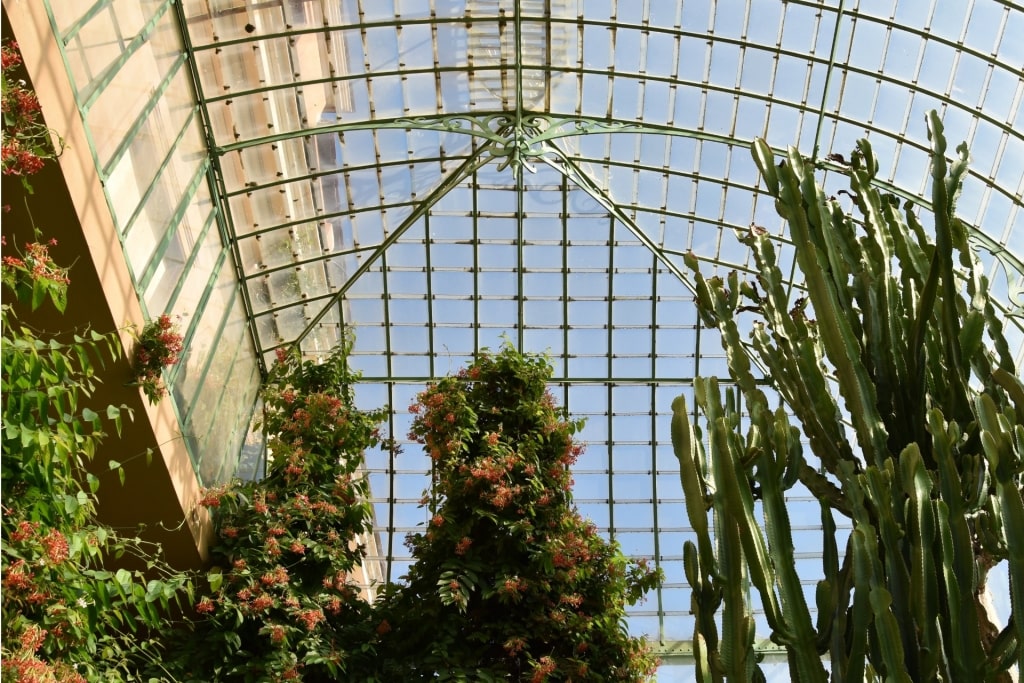
Orto Botanico di Roma
On your way down, take a detour and visit the mammoth succulents and neat pathways of the Orto Botanico di Roma.
Be Blown Away by Villa Farnesina
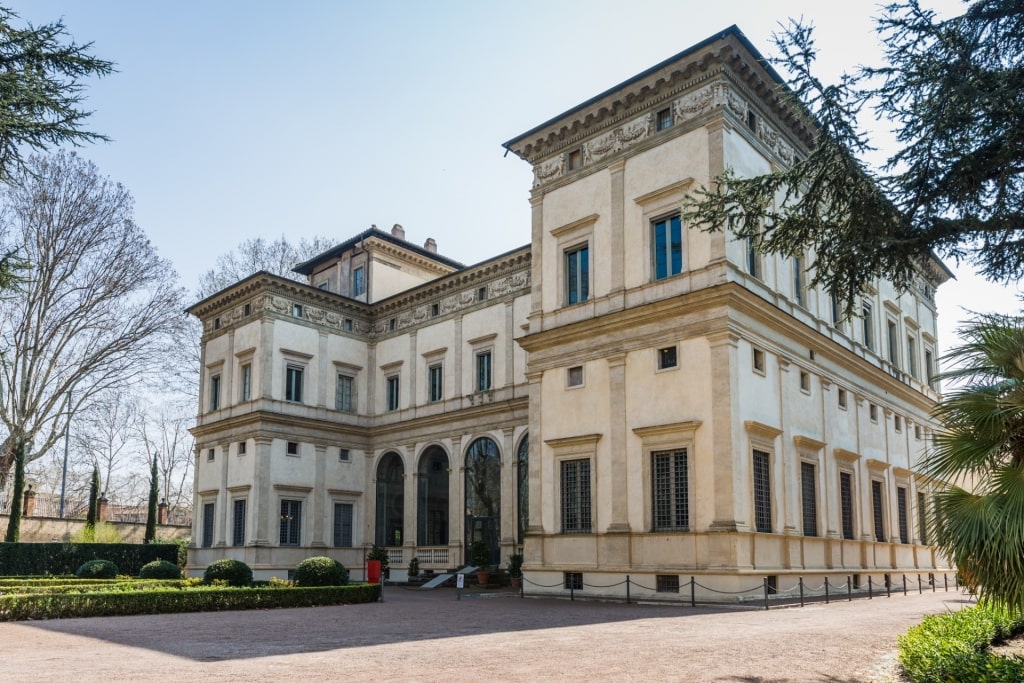
Villa Farnesina
Just up the road from Palazzo Corsini and close to the river, the Renaissance-era Villa Farnesina is one of Trastevere’s essential stops.
Created by Agostino Chigi, a blindingly wealthy Tuscan banker who named the Pope among his clients, the villa is adorned with frescos and masterpieces by various high-profile artists, including Raphael and Peruzzi.
The effort was intended to impress the dignitaries that met with the banker there. No doubt Chigi was successful in this matter.
Soak up the Nightlife
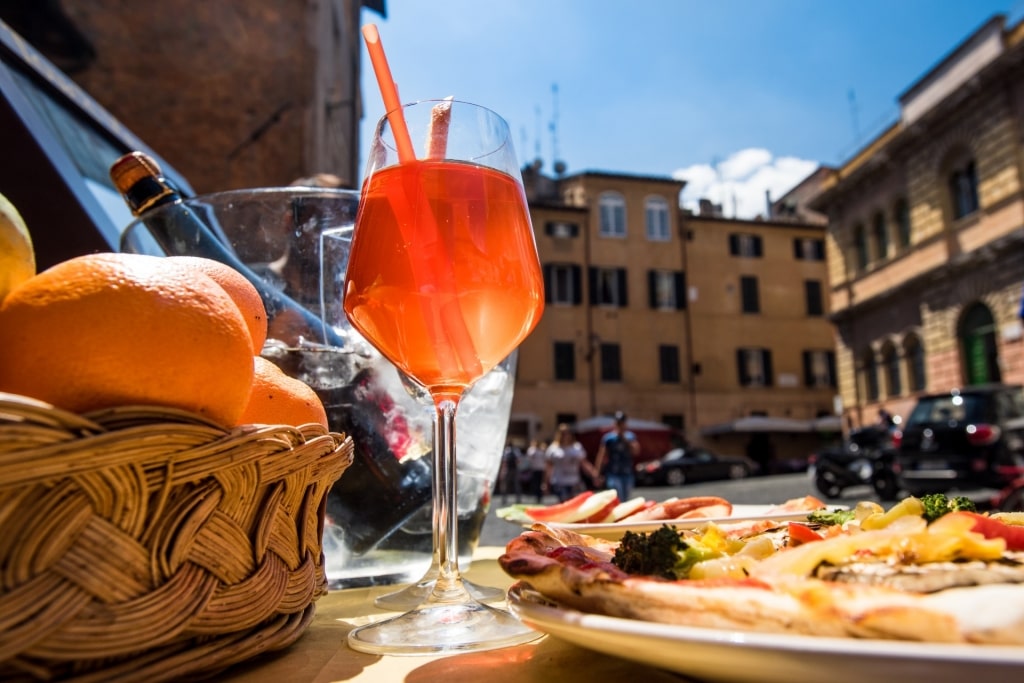
Aperol Spritz
Rome’s rioni (neighborhoods) are full of superb aperitivo spots, but Trastevere is widely recognized as one of the liveliest areas to be in as dusk settles over the Vatican.
Join the locals in their early evening passeggiata through the streets, with Piazza Santa Maria a superb starting point. While this Roman neighborhood is littered with good spots at which to pause and have an aperitivo—the popular choice of Aperol Spritz being to Italians what Guinness is to the Irish—several are considered institutions (or likely to be in the future).
Baylon, on Via di San Francesco a Ripa, is beloved for its relaxed vibe and neatly turned-out bartenders shaking up inventive cocktails tailored to your tastes. Head to Piazza dei Ponziani to drink at “The Hole”. Much nicer than the name might suggest, this tiny bar has live music and becomes very busy as the late crowd piles in.
If you’d prefer a glass of garnet-hued Barbaresco with a plate of antipasti, find popular wine spot Enoteca Ferrara on Piazza Trilussa.
Restaurants
Tonnarello
Just along the cobbles from Piazza di Santa Maria, the historic Tonnarello is one of the most revered restaurants in Trastevere, Rome.
Beneath Tonnarella’s cream umbrellas, you’ll dine on outstandingly executed traditional Italian dishes. This is the place to come to for the classic Roman pasta dishes, with the amatriciana and the cacio e pepe highly regarded.
It’s not the cheapest, but it’s worth the price. Expect a short wait for a table, especially as they don’t offer a reservation option. If the original restaurant is full up, there is a second branch close by at Piazza della Scala.
Mozzici
Bijou Mozzichi is an under-the-radar gem with its address in one of Trastevere’s most lively areas. Expect melt-in-your-mouth pasta dishes from the kitchen of Chef Mauro Podessu, as well as the kind of personable hospitality that transforms a meal into a memory.
The menu includes classics such as fettuccine “Alfredo” and a silky porcini risotto, as well as more modern-yet-traditional recipes for Italian cuisine aficionados to discover. Arrive early for super fresh and fluffy cornetto.
Antica Trattoria da Carlone
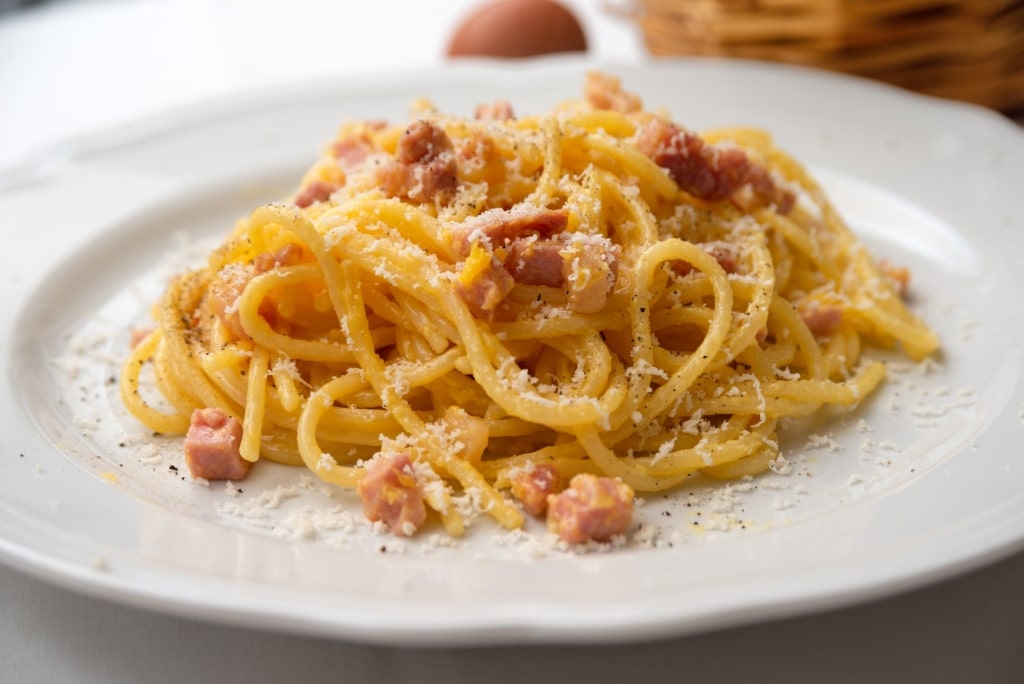
Carbonara
If you’ve come to Rome on a carbonara pilgrimage, the attractively frescoed Antica Trattoria da Carlone (or simply “Da Carlone”) should be top of your list.
This traditional family-run restaurant is famous for its spaghetti carbonara, that classic Roman staple involving a creamy sauce of pecorino, beaten eggs, and perfectly cooked guanciale (pork cheek).
So expected is your order of this renowned dish in Rome, that it’s usually suggested by your waiter in the same breath as a bottle of water for the table. Despite the white-linen tablecloths, the vibe here is warm and down-to-earth.
Fior di Luna

Gelato
Eating a gelato is one of the best things to do in Rome with kids, and Fior di Luna is a favorite pick. Eugenio Morrone, the current World Champion of Gelato, owns this hugely popular gelato parlor.
Expect one of the best cones of iced delight you’ve ever eaten. Ruin your appetite with a six euro “Maxi” of incredibly smooth and creamy peanut and caramel flavor, or the Marsala-and-fig-laced Zabaione. Afterward, with your gelato in hand, embark on a blissful exploration of this cute, ivy-strewn corner of Trastevere.
Trastevere Travel Tips
Getting to Trastevere
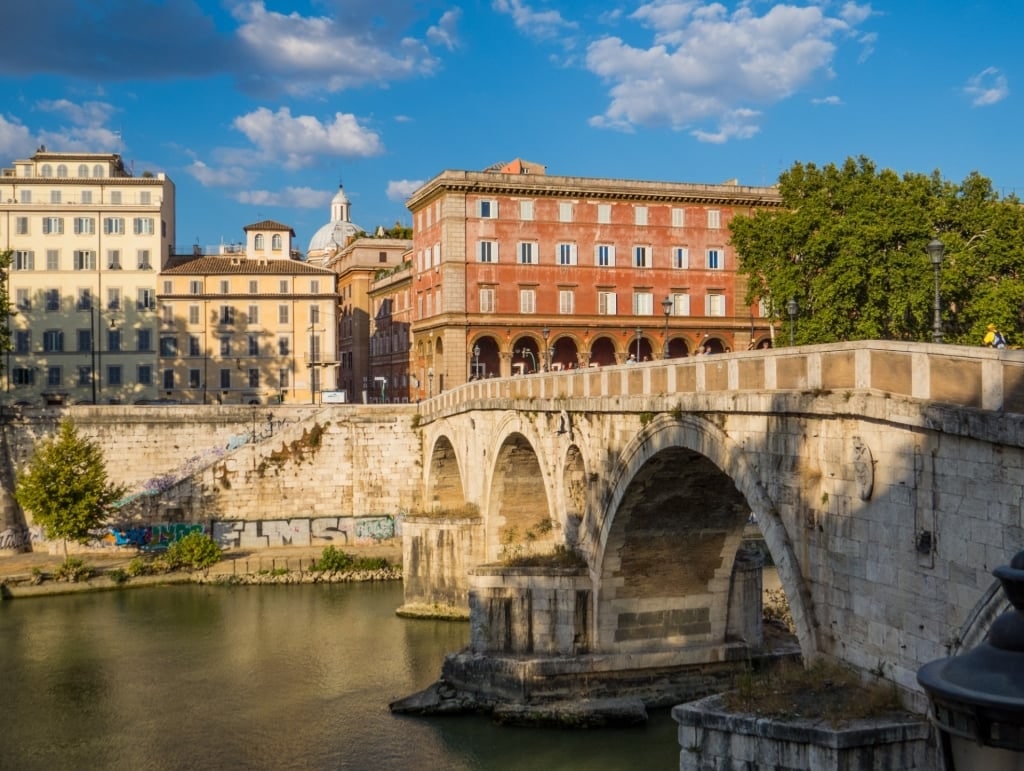
Ponte Sisto
Trastevere, Rome, is situated on the west bank of the Tiber River, visible across the water from the historical center. You can reach Trastevere on foot by crossing the Ponte Sisto bridge. If you’d rather hop on a tram, Line 8 serves Trastevere Station and offers a comfortable and scenic route to this vibrant quarter of Rome.
Best Time to Visit
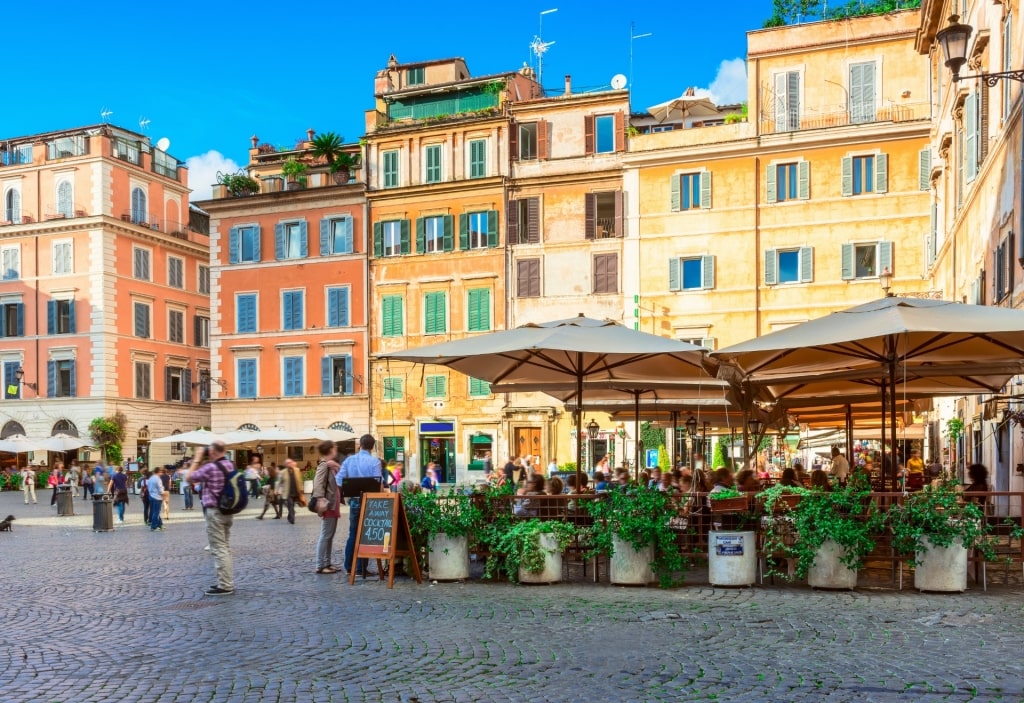
Trastevere
Rome basks in a Mediterranean climate, with mild winters and hot summers, making it an all year destination. If you’re keen on dining al fresco in the evenings, the best time to visit Rome and its lovely Trastevere neighborhood is from late spring to early fall, roughly between May to September. During these months, temperatures range from the mid-60s to mid-80s Fahrenheit.
What to Pack
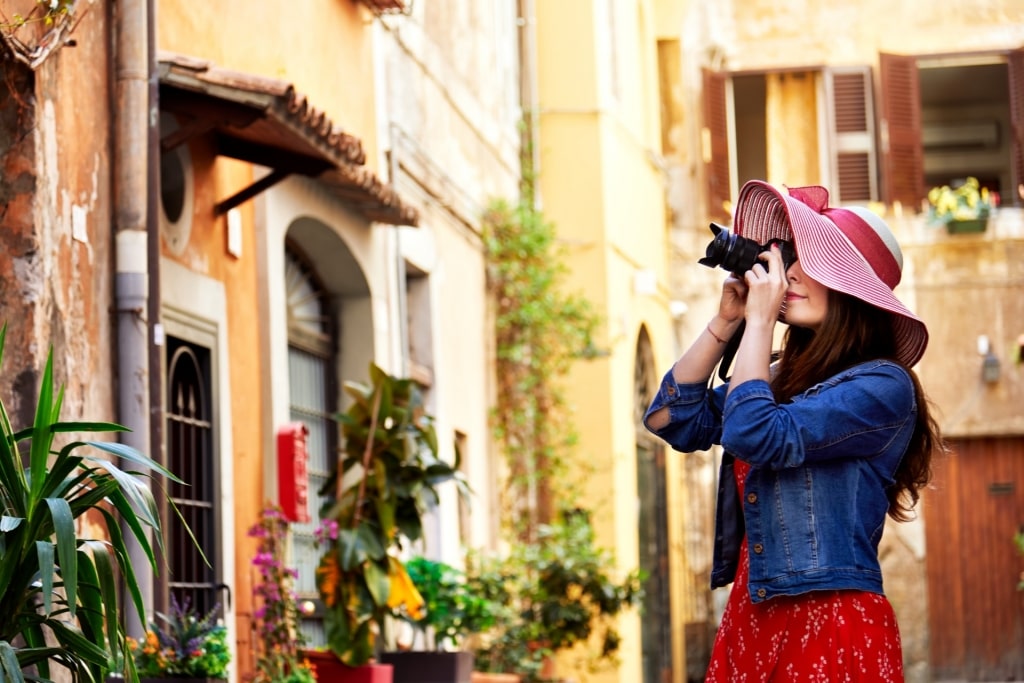
Trastevere
For your trip to Trastevere, pack light, breathable clothing suitable for warm weather, including cotton and linen fabrics. Don’t forget sunscreen, sunglasses, and a sun hat to shield yourself from the Mediterranean rays while exploring Trastevere’s charming streets and cafés.
Comfortable walking shoes are a must, especially if you’re undertaking the Passeggiata del Gianicolo or visiting the up-and-down botanical gardens.
Currency & Tipping
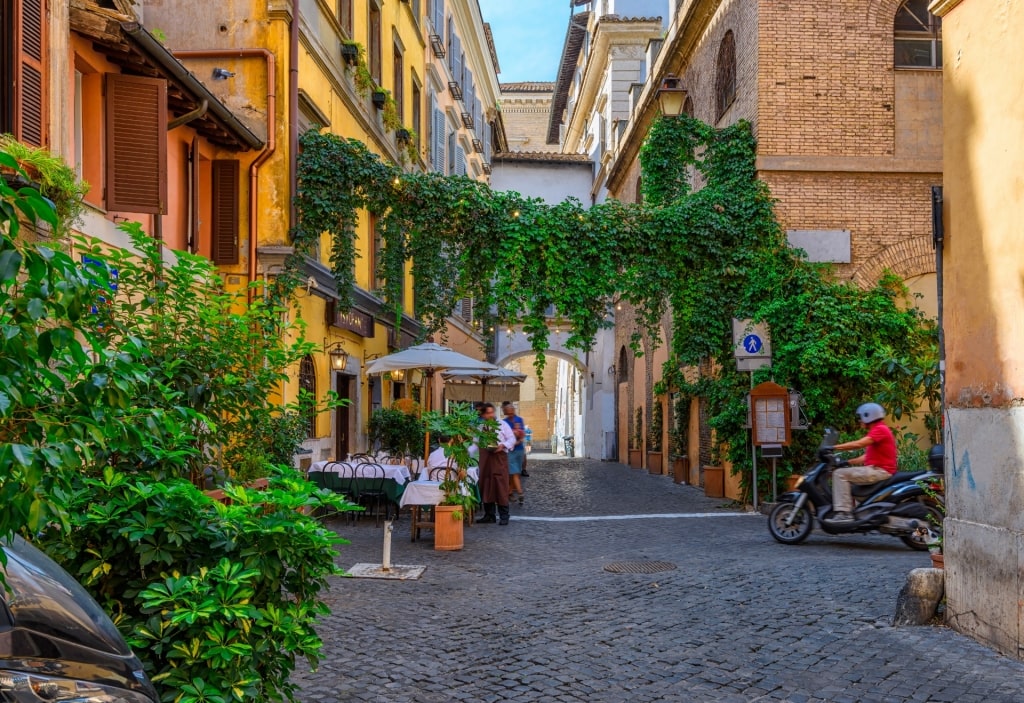
Trastevere
In Trastevere, Rome, the currency is the Euro (EUR). Ensure you have sufficient cash or a valid credit card. ATMs are available but may have lines in this busy shopping quarter in Rome.
There is no expectation in Italy regarding tipping. In restaurants, locals will tip between 10 and 15 percent only when they feel they have had exemplary service. However, feel free to leave the change from the bill. And look out for the coperto or service charge, which indicates an extra charge, similar to the tip, already included in the total.
Read: Tipping in Italy: The Ultimate Guide
What to Buy

Supplì
Trastevere is kind to your luggage allowance: many of the best things to buy here are edible. Don’t miss out on authentic Roman specialties such as supplì (fried rice balls stuffed with cheese) or artisanal gelato from one of the neighborhood’s renowned gelaterias.
While you’re gorging on mind-blowing gelato, don’t forget to explore local markets for unique souvenirs like handmade ceramics or vintage treasures, especially if you’re spending at least three days in Rome.
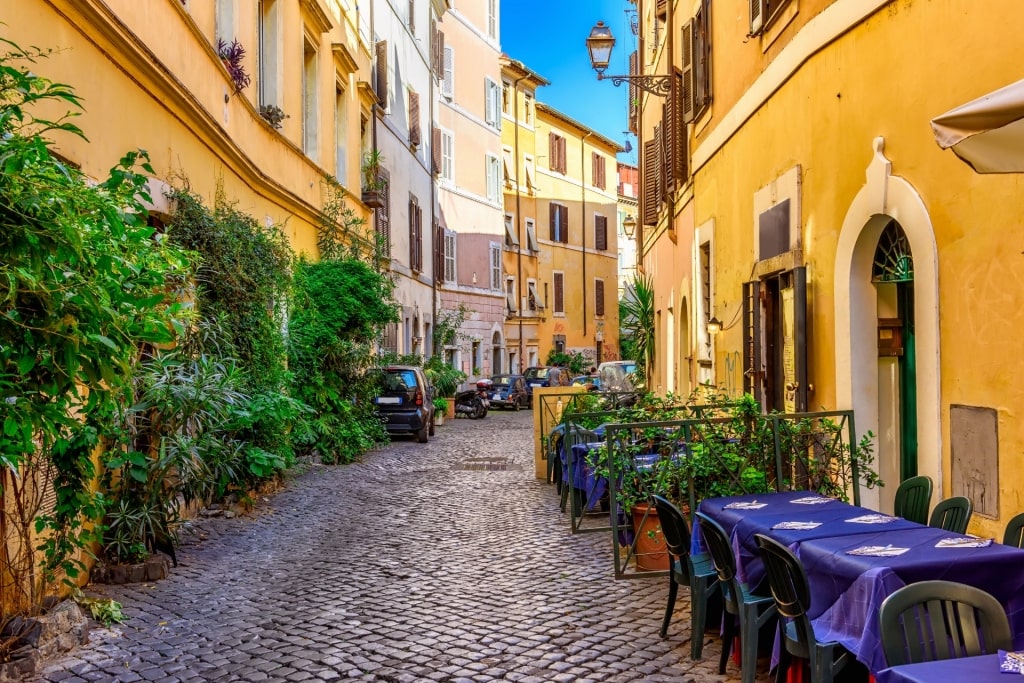
Trastevere
Are you dreaming of a sun-kissed adventure in the land of la dolce vita? Browse Celebrity’s cruises to Rome and other Italian destinations and book your next incredible getaway today.
